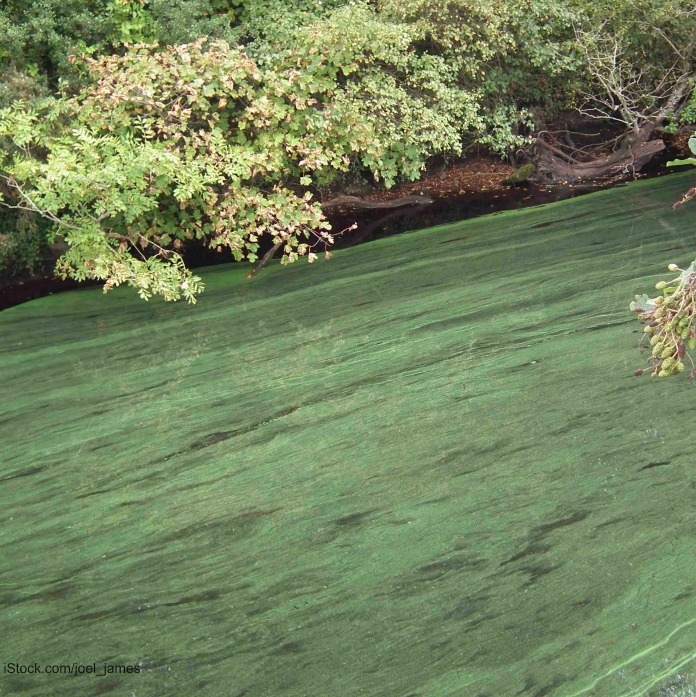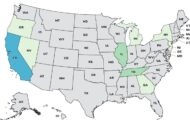The Minnesota Department of Health is warning people to avoid blue-green algae in lakes, streams, and ponds. This algae can cause illness to humans and has killed many dogs.
Blue-green algal blooms were reported in lakes across the state last summer. Two people got sick, and many dogs died after exposure to the algae. These blooms usually start in June, but spring has been warm this year, so the growth may have already begun.

Blue-green algae usually has an unpleasant smell and most people avoid it. But people can become ill after they swim, boat, water ski, or bathe in water that has this toxic algae. Swallowing the algae, or having skin contact with the water can cause illness. In addition, breathing in tiny droplets of water in the air can make you sick. The symptoms of illness in most people are vomiting, diarrhea, rash, eye irritation, cough, sore throat, and headache.
Because dogs wade in lakes where the scum accumulates, they are at particular risk. And dogs will swallow more water than people while swimming, especially if they are retrieving toys from the water. And when they groom themselves after swimming, they can ingest more algae. Symptoms of toxicity in dogs include vomiting, diarrhea, rash, difficulty breathing, general weakness, liver failure, seizures, and death.
There is no way to tell if a blue-green algal bloom is toxic by looking at it. The harmful blooms look like pea soup, green paint, or floating mats of scum. They sometimes have a bad smell. But these blooms aren’t always large and dense and can be present in a lake with little visible algae. Before you, your children, or your pets go into the water, look at the lake closely to see if there is algae on teh water or on the shore.
Pam Anderson, MPCA Water Quality Monitoring Supervisor said, “if it looks and smells bad, don’t take a chance. We usually tell people: if in doubt, stay out. If you’re not sure, it’s best for people and pets to stay out of the water.”
If you do come into contact with the algae, wash off with fresh water immediately, paying special attention to the areas your swim suit covers. Rinse off pets with fresh water.
There are no solutions to fix these blooms. Once a bloom occurs, the only option is to wait for the weather to change to disrupt the algae’s growth. The long term solution to ending these toxic blooms is to improve water quality by reducing phosphorus in lakes. Runoff from urban and agricultural land contains phosphorus. Limiting applications of fertilizers that contain phosphorus, sweep ing up lawn clippings and soil from sidewalks and pavement, and cleaning up pet waste are the ways homeowners can help.
You can report a possible human or animal illness. Visit the Minnesota Department of Health Harmful Algal Blooms website.




